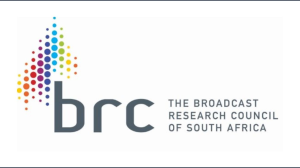The Broadcast Research Council of South Africa (BRC) has confirmed a comprehensive update to its radio audience measurement programs, reaffirming its commitment to producing valid, reliable, and stable data that reflects the evolving South African broadcast media landscape.
“The media industry in South Africa has long relied on world-class research as the foundation for effective decision-making. As the industry continues to transform, we are dedicated to ensuring our audience measurement systems keep pace, providing stakeholders with the insights they need to thrive,” says Gary Whitaker, CEO of the BRC.
BRC revealed that the release of RAMS Amplify Q1 2024 data was delayed due to concerns raised by the Radio Research Committee (RRC), particularly around the past-seven-day (P7D) radio listening figures, which have declined slowly but steadily over the past few years, says the BRC.
“We take these concerns seriously and have established a technical subcommittee to identify areas for improvement in RAMS Amplify,” Whitaker said. “This subcommittee will work closely with Ipsos to address the queries and provide an action plan to ensure the data can be released with confidence.”
The BRC’s analysis, conducted by 3M3A, found no issues with the sample or weighting in the March 2024 dataset, indicating a gradual decline in overall radio listening. However, the analysis also highlighted some interesting trends, such as the impact of the Youth Booster and the High-Income / Online Booster.
“We will be monitoring these trends closely and exploring the potential need for more qualitative research to better understand how consumers are engaging with radio. Our goal is to ensure RAMS Amplify remains a reliable and responsive currency that reflects the evolving listening habits of South Africans.”
As the BRC approaches the conclusion of the RAMS Amplify Ipsos contract in January 2026, it has announced taking proactive steps to ensure a smooth transition to either a new currency or an enhanced version of the existing one.
“We cannot afford to rely on a 24-month rolling dataset, which could result in prolonged data release timelines. To avoid the pitfalls, we experienced during and after the COVID-19 pandemic, we will be launching a Request for Proposal (RFP) process in 2024 to explore various options and scenarios.”
BRC says it is also exploring opportunities for greater collaboration between television and radio broadcasters, with the goal of future-proofing the audience measurement systems and achieving economies of scale.
Whitaker also added that jointly funded studies, such as the Establishment Survey, and potentially combining budgets for the development of an audio-visual currency that spans both traditional and digital broadcast media, will be key considerations during the RFP process.
Recognizing the rapidly evolving media landscape and the need for a holistic understanding of audience measurement, the BRC says that it is committed to upskilling the industry through a dedicated education initiative.
“Our currencies are under scrutiny, as they should be, to ensure they adapt to the new realities we face. The challenge ahead is to provide a comprehensive perspective of the audience and we are dedicated to equipping the industry with the knowledge and tools to navigate this changing landscape,” he noted.
The BRC’s education initiative will include a BRC certification program covering: RAMS, the Establishment Survey, Log Verification, Universe Updates, Fusion, and more.
Additionally, the organizations revealed that it will be providing bite-sized, audio-visual educational content to engage and inform the industry.
“We believe that a clearly defined educational division is a common feature of successful Joint Industry Committees (JICs) around the world.”
He said, by investing in industry education, stakeholders can be empowered to make informed decisions and leverage audience measurement tools to their fullest potential.
The organization said it remains steadfast in its commitment to advancing the media industry in South Africa through collaborative, transparent and future-focused initiatives.
“Our global reputation for excellence is built on a deep level of industry collaboration, and we are dedicated to upholding this legacy. By working closely with all stakeholders, we will ensure that our audience measurement systems continue to provide the valid, reliable and stable data that underpins the success of the South African media industry.”

